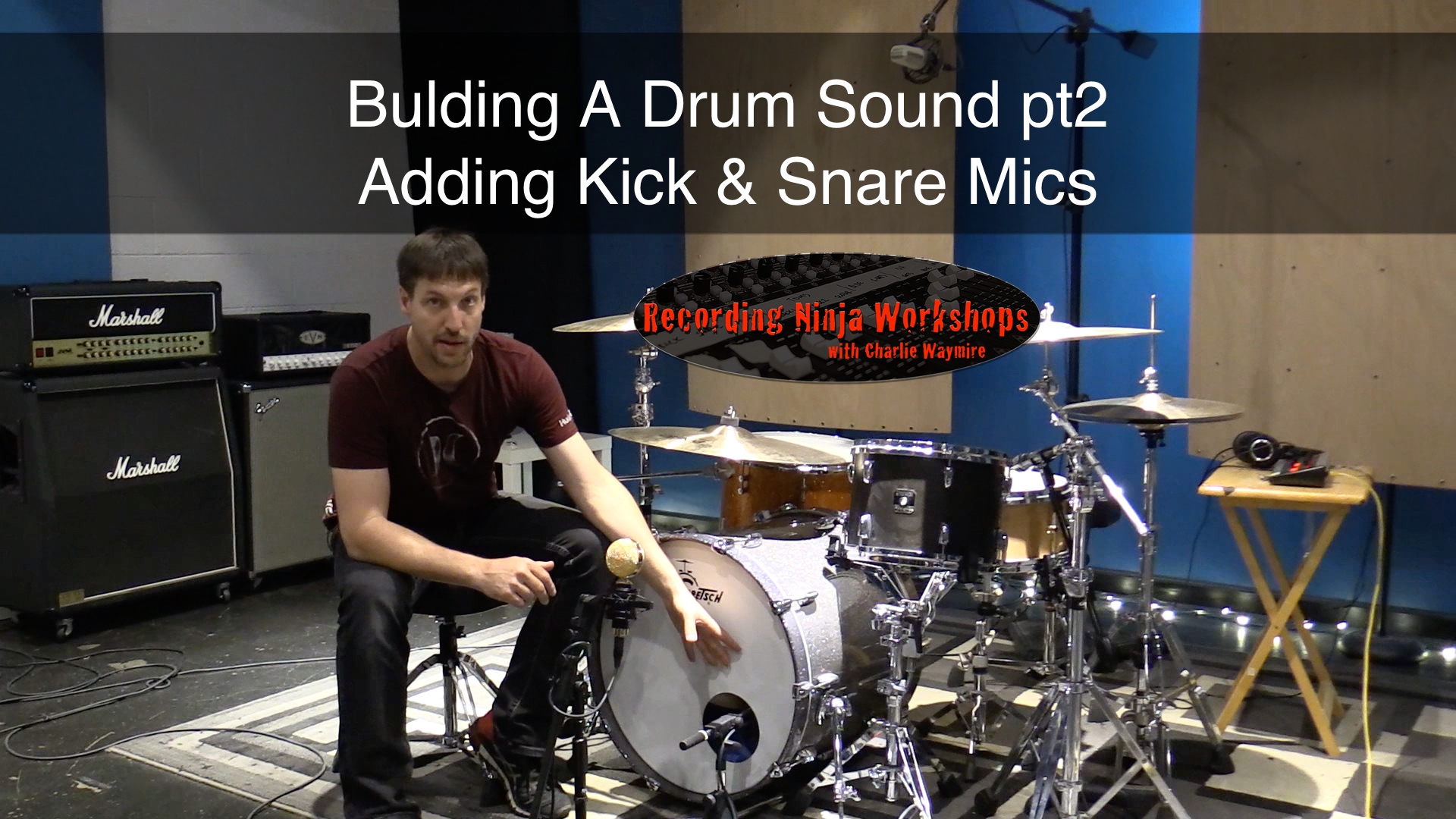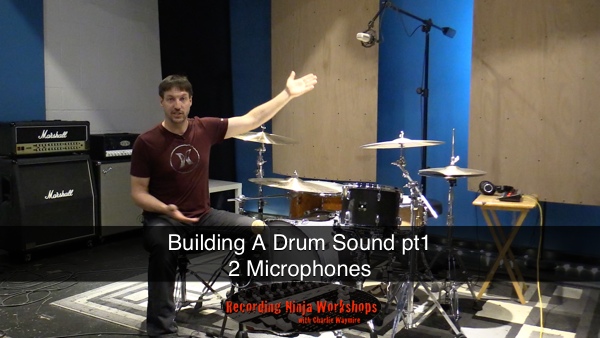In “Building A Drum Sound pt1” I focused on getting a complete drum sound with only 2 microphones. A mono overhead and a mic in front of the kit.
Those 2 mics produced a very nice, full, and accurate drum sound. They work on their own but they also give us a strong foundation to build a full, modern, punchy, rock tone.
So now that we have a strong foundation we’re going to add spot mics on the kick and snare to help give our drum sound some punch, presence, and a bit more clarity.
With the ribbon mic supplying our low end and body of the kick, we’ll place our kick mic well inside the drum. This will help give the kick some much need punch to cut through the mix.
Although the overhead mic captured a wonderful snare sound, adding a mic to the top of the snare will help with articulation and, like the kick, help the snare cut through the mix.
Remember, the first two mics are really important. Without them our spot mics will sound small and lack any sense of space or depth.
Last week I challenged you to pick two microphones from your mic locker and record the best drum sound possible. Now I want to you take those two microphones and add a mic on the kick and snare. Send me a message and let me know how it goes!
Enjoy “Building A Drum Sound pt2” and I’ll see you next week for part 3!
Happy recording!
Charlie


